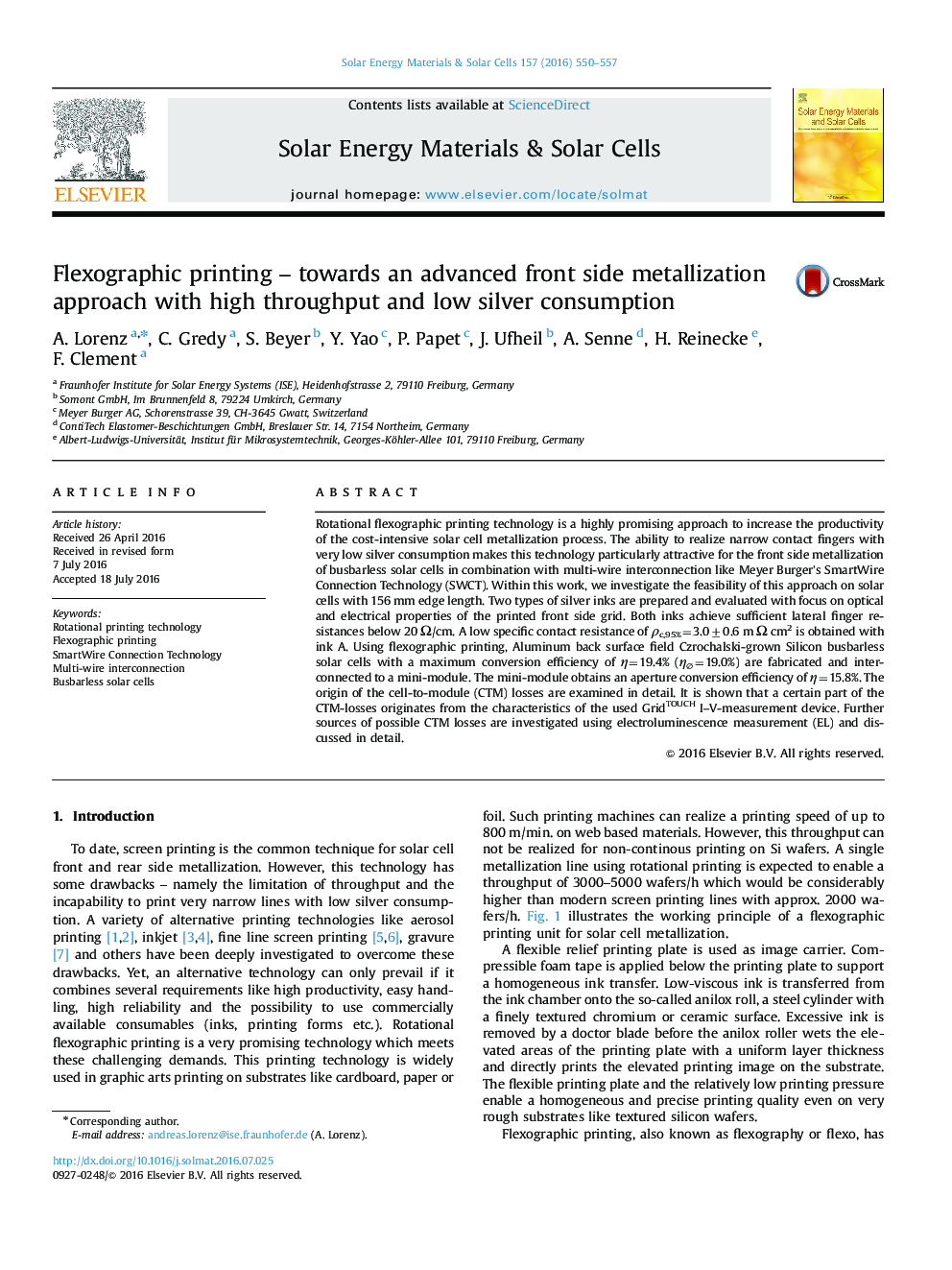| Article ID | Journal | Published Year | Pages | File Type |
|---|---|---|---|---|
| 6534621 | Solar Energy Materials and Solar Cells | 2016 | 8 Pages |
Abstract
Rotational flexographic printing technology is a highly promising approach to increase the productivity of the cost-intensive solar cell metallization process. The ability to realize narrow contact fingers with very low silver consumption makes this technology particularly attractive for the front side metallization of busbarless solar cells in combination with multi-wire interconnection like Meyer Burger's SmartWire Connection Technology (SWCT). Within this work, we investigate the feasibility of this approach on solar cells with 156 mm edge length. Two types of silver inks are prepared and evaluated with focus on optical and electrical properties of the printed front side grid. Both inks achieve sufficient lateral finger resistances below 20 Ω/cm. A low specific contact resistance of Ïc,95%=3.0±0.6 m Ω cm2 is obtained with ink A. Using flexographic printing, Aluminum back surface field Czrochalski-grown Silicon busbarless solar cells with a maximum conversion efficiency of η=19.4% (ηâ
=19.0%) are fabricated and interconnected to a mini-module. The mini-module obtains an aperture conversion efficiency of η=15.8%. The origin of the cell-to-module (CTM) losses are examined in detail. It is shown that a certain part of the CTM-losses originates from the characteristics of the used GridTOUCH I-V-measurement device. Further sources of possible CTM losses are investigated using electroluminescence measurement (EL) and discussed in detail.
Keywords
Related Topics
Physical Sciences and Engineering
Chemical Engineering
Catalysis
Authors
A. Lorenz, C. Gredy, S. Beyer, Y. Yao, P. Papet, J. Ufheil, A. Senne, H. Reinecke, F. Clement,
